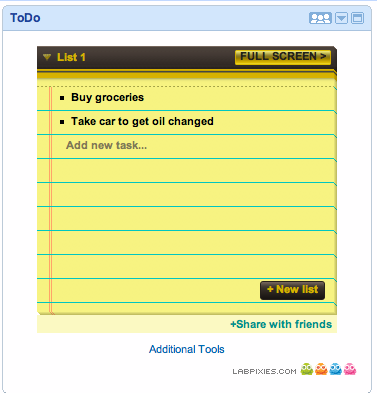Marissa Mayer On iGoogle’s New “Social Gadgets”
This morning Google is rolling out a program in Australia enabling developers to create “social gadgets” that permit sharing, collaboration and groups on the iGoogle homepage. The social gadgets will come to the US and other markets in the future, but the timing is undetermined. I spoke yesterday with Google’s Marissa Mayer about the new […]
This morning Google is rolling out a program in Australia enabling developers to create “social gadgets” that permit sharing, collaboration and groups on the iGoogle homepage. The social gadgets will come to the US and other markets in the future, but the timing is undetermined. I spoke yesterday with Google’s Marissa Mayer about the new initiative, built on the Open Social platform.
At the outset there are apparently 12 social gadgets, eight of which were created by third party developers. For example, there’s a chess gadget and other casual game gadgets — casual games have become huge on Facebook — that allow iGoogle users to play with one another. There’s photo sharing, featuring Picasa and Flickr, and a to-dos gadget, which allows you to share your list or created a combined list with others. In some cases, there will be Twitter-like activity streams (see “Timeline” below) that display updates to all participating users in real-time.
Here are some screenshots provided by Google:
These social gadgets would seem to owe something to both Facebook and Twitter but they also represent a logical evolution of the iGoogle product and gadgets platform more broadly. The personalized homepage has “tens of millions of users,” according to Mayer. It was until recently also the fastest growing product at Google. Making it “social” will likely generate further growth.
I asked whether social gadgets would make an appearance on Google Maps. I was told no but the Maps API permits developers to build social gadgets for iGoogle using Maps. Google is also thinking about extending this into mobile but that will take longer because of technical challenges and constraints in the mobile browser.
I also asked about Google Wave and whether there would be any crossover. Mayer said that she thought there would be some collaboration between the teams.
What’s fascinating to me is that Google has gone from a company that a few of years ago failed to fully appreciate how big social networking would become to one that done “a 180” and fully embraced community. Google offers a social layer — as with the introduction of social gadgets — across many of its services. Latitude in Google Maps in another obvious example, but there are numerous others.
We don’t yet know how successful social gadgets will be. However, in a best-case scenario, it could potentially become the missing “social center” that has not taken root through other Google services including Orkut, Google’s actual social network.
In addition, if one steps back and imagines a rich ecosystem of gadget developers and engaged users, down the line, one can see iGoogle evolving into a Facebook-like experience featuring community, apps, status updates and so on.
I don’t mean to suggest that iGoogle will challenge Facebook (it won’t) or that anyone else is thinking along these lines exactly. But there’s an interesting, potential parallel if social gadgets really take off and iGoogle evolves into a new social media platform.
Opinions expressed in this article are those of the guest author and not necessarily Search Engine Land. Staff authors are listed here.
Related stories
New on Search Engine Land



